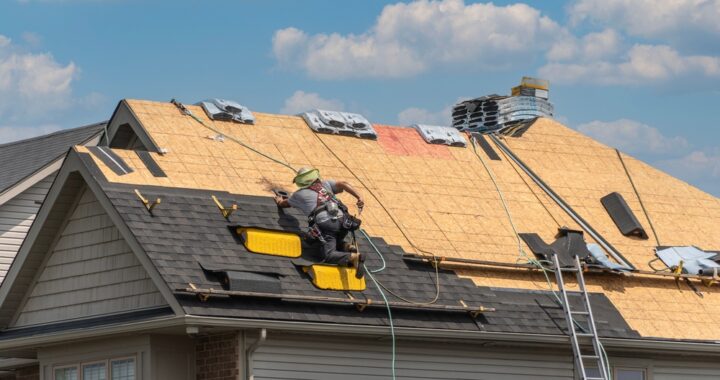A recent case involved a homeowner’s all-risk property insurance policy with ordinance and law coverage. This ordinance and law coverage required the carrier “to cover costs that the [insureds] incur as a result of any ordinance that requires them to replace ‘the portion of the undamaged part of a covered building or other structure necessary to complete the remodeling, repair or replacement of that part of the covered building or other structure damaged by a Peril Insured Against.” Weston v. Universal Property & Casualty Insurance Co., 50 Fla.L.Weekly D2307a (Fla. 2d DCA 2025). The property insurance policy required the insurer to pay the actual cash value of the loss, minus any deductible, and “any remaining amounts necessary to perform such repairs as work is performed and expenses are incurred.” Id.
Here, the insureds sustained roof damage from a storm. The insureds had an expert that opined, with a reasonable degree of certainty, that the entire roof needed to be replaced because “[t]here was damage to more than twenty-five percent of the roof, and the Florida Building Code provided that if more than twenty-five percent of the roof was damaged, then the entire roof should be replaced.” Weston, supra. The insureds also had an expert that testified to an estimate- the replacement cost of the damage as well as the actual cash value of that damage.
The trial court, however, granted directed verdict in favor of the insurer for three reasons. The court ruled that the insureds did not prove that the carrier breached the insurance contract because it did not prove the carrier failed to pay the actual cash value of the damage. Next, the court ruled that once the carrier paid the actual cash value, minus the deductible, it was not required to make further payments under the additional work was performed. And lastly, the court ruled that the insurer made payment to the insureds based on its field adjuster’s estimate, which was the only estimate of the actual cash value. The appellate court found that all such reasons were erroneous.
First, the insureds did present evidence through expert testimony that the full roof needed to be replaced under the law and ordinance coverage and the twenty-five percent rule under the Florida Building Code. Thus, the trial court erred in rejecting the insureds’ actual cash value estimate that factored in the full roof replacement. The dispute between the insureds and insurer as to damage, the percentage of roof that was damaged to trigger the twenty-five percent rule, and repair costs were factual and should have gone to a jury.
Second, the insurer rejected the application of the twenty-five percent rule to the damages claimed by the insured. Thus, the insurer did not pay the actual cash value of the full roof replacement and damage. “According to [the insurer], if an insured does not make repairs to their home after an insurer has determined that the repairs are unnecessary, then the insured is precluded from asking a court to determine whether the insurer improperly refused to cover the loss. This approach places insureds in the untenable position of paying for what they contend should be covered by the insurer and then hoping that the insurer will have a change of heart, despite repeated denials, and reimburse them for their loss.” Weston, supra.
Third, the insureds did not have a burden to provide the insurer with an actual cash value estimate before a lawsuit was filed. This is notable here where the insurer took the position before suit that its payment to the insurer fulfilled its obligation. Here, the insureds did submit estimates of roof repairs to the insurer; however, the insurer disagreed with them because the estimates were for full roof replacement, and the insurer did not agree with the full roof replacement.
Please contact David Adelstein at dadelstein@gmail.com or (954) 361-4720 if you have questions or would like more information regarding this article. You can follow David Adelstein on Twitter @DavidAdelstein1.



 It is common for insurance policies to have a
It is common for insurance policies to have a  Notice, notice, notice
Notice, notice, notice
 When it comes to insurance contracts, there is a rule of law that states, “where interpretation is required by ambiguity in insurance contracts[,] the insured will be favored.” Pride Clean Restoration, Inc. v. Certain Underwriters at Lloyd’s of London, 46 Fla. L. Weekly D2584a (Fla. 3d DCA 2021) (citation and quotation omitted). Stated another way: ambiguities in insurance contracts will be interpreted in favor of the insured and against the insurer.
When it comes to insurance contracts, there is a rule of law that states, “where interpretation is required by ambiguity in insurance contracts[,] the insured will be favored.” Pride Clean Restoration, Inc. v. Certain Underwriters at Lloyd’s of London, 46 Fla. L. Weekly D2584a (Fla. 3d DCA 2021) (citation and quotation omitted). Stated another way: ambiguities in insurance contracts will be interpreted in favor of the insured and against the insurer. In the preceding
In the preceding  I am of the opinion that if your property insurer requests a sworn proof of loss, furnish one with the assistance of counsel (preferably). Ignoring the insurer’s request or refusing to comply with insurer’s request is NOT value-added; it is simply placing you at a disadvantage based on the insurer’s argument that you, as the insured, materially breached the policy. I generally find no value having to confront this expected argument. Instead, I find value making an effort to comply with post-loss obligations including the insurer’s request to submit a sworn proof of loss. Working with counsel can help you comply with post-loss obligations (conditions precedent) while not weakening the value or merits of your claim.
I am of the opinion that if your property insurer requests a sworn proof of loss, furnish one with the assistance of counsel (preferably). Ignoring the insurer’s request or refusing to comply with insurer’s request is NOT value-added; it is simply placing you at a disadvantage based on the insurer’s argument that you, as the insured, materially breached the policy. I generally find no value having to confront this expected argument. Instead, I find value making an effort to comply with post-loss obligations including the insurer’s request to submit a sworn proof of loss. Working with counsel can help you comply with post-loss obligations (conditions precedent) while not weakening the value or merits of your claim. Insurance policies, particularly property insurance policies, have a
Insurance policies, particularly property insurance policies, have a